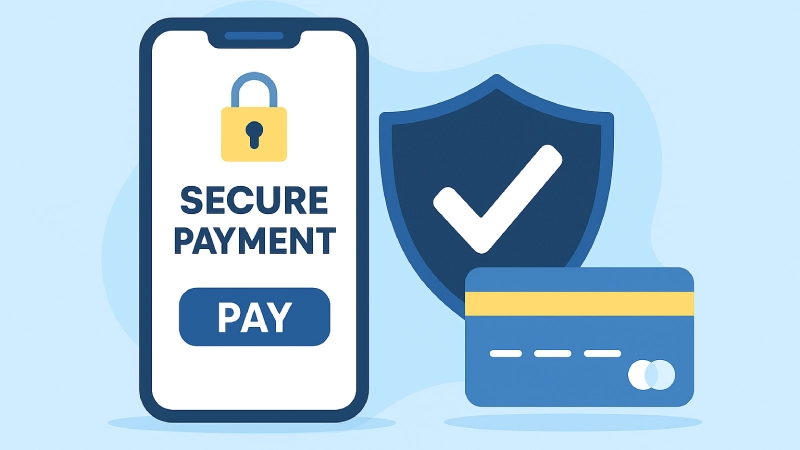Digital payments have completely changed the way we spend money online. From streaming subscriptions to mobile apps, micro-payments play a central role in shaping the digital economy. Nowhere is this shift more evident than in the iGaming sector. So let’s take a look at how technology is powering micro-payments in online casinos.
A micro-payment is a very small financial transaction. It typically ranges from a fraction of a cent up to a few dollars. They’re used when the cost of a product, service, or piece of digital content is too low to justify a traditional purchase or subscription. Online casinos are adopting a similar approach to this. For example, the 1 dollar deposit casino NZ allows players to experience real-money gaming with just a minimal upfront payment, showing how micro-transactions make gambling more accessible and flexible.
The rise of micro-payments in iGaming
Micro-payments have been part of the digital ecosystem for years now. We’ve seen them in app stores, in-game purchases, and even journalism, where platforms experiment with pay-per-article models. In online casinos, however, they represent a huge shift in the way players are gaming.
Traditionally, most casinos required a high minimum deposit. This created a barrier for more casual players and meant casino gaming was more of a financial commitment. However, by enabling deposits as low as $1, online casinos are able to attract new audiences who want to explore casino gaming without a financial commitment. Players are more likely to play if they can try out a platform with a smaller deposit, as it is much less of a commitment. For players, micro-deposits mean greater flexibility and lower risk. For operators, they increase accessibility, broaden customer bases, and foster trust through transparency. This dual benefit, accessibility for users and scalability for businesses, is driving the rapid adoption of micro-payment models across the global iGaming industry.

The fintech infrastructure is making it possible
The ability to process micro-payments profitably at scale is not accidental. It’s the result of years of innovation in fintech and payments infrastructure. Several key technologies underpin this evolution:
- Digital wallets and mobile payments: Services like Apple Pay, Google Pay, Skrill, and POLi are central to enabling the low-value transactions. They lower processing costs, speed up transfers, and simplify user experience. Players can deposit small amounts instantly without the friction of traditional banking.
- Banking API and open banking: Open banking regulations and modern banking APIs allow casinos to link directly with banks for instant deposits and withdrawals. For micro-transactions, this means deposits as small as $1 can be verified and processed in seconds. Coupled with automated KYC (know your customer) checks, players can enjoy faster onboarding, and casinos maintain compliance without adding friction.
- Blockchain and cryptocurrencies: For casinos operating internationally, blockchain offers a way to process micro-payments at a low cost. Cryptocurrencies like Bitcoin, Ethereum, or stablecoins reduce reliance on costly intermediaries. Smart contracts add another layer of automation. This enables near-instant payouts and transparent record-keeping.
Security and trust at scale
Micro-payments thrive only when users feel safe. In online casinos, this means robust security frameworks must protect both small and large transactions. Technology is securing experiences with:

- Encryption and tokenisation: Every transaction, even a $1 deposit, must be encrypted to safeguard sensitive financial data. Tokenisation replaces payment details with secure identifiers. This reduces the risk of fraud.
- Fraud detection with AI: Casinos employ AI-driven systems that detect unusual behaviour across thousands of micro-transactions in real time.
- Regulatory technology: Automated compliance checks ensure that casinos adhere to local gambling laws. For example, age verification and anti-money laundering (AML) measures are enforced seamlessly. This is often without players noticing the complexity behind the scenes.
This mix of advanced security measures builds the trust that’s necessary for users to feel comfortable making frequent, low-value payments.
The future of micro payments beyond casinos
While online casinos provide a clear example, the implications of micro-payments extend far beyond iGaming. The same technologies are reshaping industries across the digital economy:
- Streaming services: Pay-per-view models or micro-subscriptions allow users to pay only for what they watch.
- E-learning: Students can purchase single lessons or learning modules at minimal cost.
- Media and journalism: Publishers explore pay-per-article models that are enabled by digital wallets and blockchain.
- Web3 and decentralised apps: Blockchain-based ecosystems aim to make micro-payments the default for digital interactions, from tipping creators to accessing premium content.

Micro-payments represent a powerful shift in how consumers interact with digital platforms. In online casinos, they have lowered barriers to entry, expanded audiences, and built trust through affordability. Technologies like mobile wallets, banking APIs, and blockchain make it all possible, supporting transactions that were once too small to be practical.
The rise of 1-dollar deposits is more than just a gambling trend. It reflects a broader transformation in global payments: one where affordability, flexibility and trust define the future of digital commerce. As fintech continues to evolve, micro-payments will only grow in importance, reshaping industries from entertainment to education and beyond.